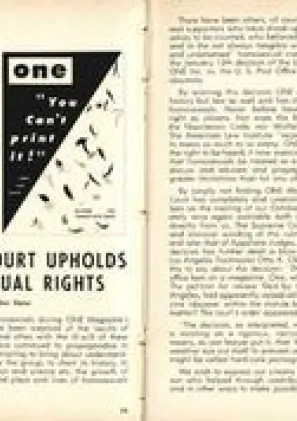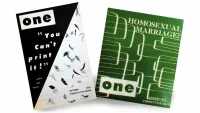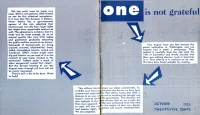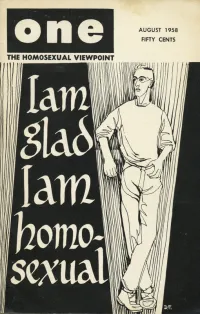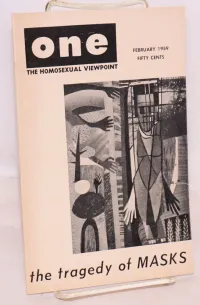-
One, Inc. v. Olesen SCOTUS Ruling Upholds Mailing of LGBT Literature
"For the first time in American publishing history, a decision binding on every court now stands....affirming in effect that it is in no way proper to describe a love affair between two homosexuals as constitut(ing) obscenity."
- ONE: The Homosexual Magazine issue just after the SCOTUS ruling
ONE: The Homosexual Magazine was established in 1953 by individuals who formed One, Inc., a Los Angeles based LGBT rights organization, during a Mattachine Society meeting to distribute information “dealing primarily with homosexuality from the scientific, historical and critical point of view, and to aid in the social integration and rehabilitation of the sexual variant.” Within a few months the circulation jumped to around 2,000 copies. Popular and well-produced, ONE was provocative in its time because, though circumspect when addressing sexuality itself, it was unapologetic and defiant in its coverage politics, legal issues, police harassment, civil rights, employment challenges, and numerous philosophical themes. Perhaps ONE’s most notable accomplishment was that it existed at all, given that its debut coincided with homosexuality being criminalized in every state, and stigmatized as a mental illness during the McCarthy Era when gays were not only denounced as security risks, but as a risk to the very moral fiber of the nation. Nonetheless, the magazine soon found a following of nearly 2000 subscribers. Though ONE offered nothing that could be viewed as remotely prurient by today’s standards – the United States Post Office Department and the FBI, under pressure from Congress, began a campaign of harassment in an effort to shut it down. Declaring the October 1954 issue to be obscene, Los Angeles Postmaster, Otto Olesen, invoked the 1873 Comstock Act which prohibited sending “obscene, lewd, and/or lascivious” material through the U.S. Mail. ONE’s principal editors and publishers – Martin Block, Dale Jennings, Don Slater and Donald Webster Cory – sued Olesen and his office in federal district court asserting the magazine was educational and not pornographic. The judge ruled for the Post Office in March 1956, and a subsequent appeal to the 9th Circuit Court resulted in ONE being characterized as a “morally depraving and debasing” publication whose primary purpose was to induce “lewd and lascivious thoughts and sensual desires in the minds of persons reading it.” Undaunted, ONE took its case to the U.S. Supreme Court. Much to everyone’s surprise, the Court issued a one-sentence decision on January 13, 1958 which not only overturned the two lower courts, but expanded press freedoms by effectively limiting the power of the Comstock Act to interfere with the written word. As a result, gay and lesbian publications could be mailed without legal repercussions. The implications of the first-ever “pro-Gay” Supreme Court ruling (it would be decades before there would be another) meant that the nascent “gay community” – which had been limited to urban nodes of activism – could, through publications like ONE and The Ladder, reach far beyond local geographical limitations to distribute the information which, literally, made the national gay rights movement possible.
Demography
Nations Affiliated United States
Era/Epoch Homophile Movement (1945-1969)
